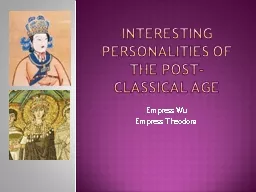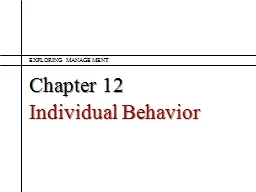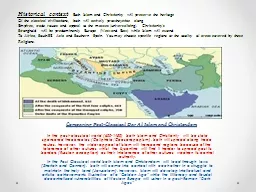PPT-Interesting Personalities of the post-Classical Age
Author : alida-meadow | Published Date : 2016-03-06
Empress Wu Empress Theodora Empress Wu zetian The only female in Chinese history to rule as emperor Effectively ruled China during one of its more peaceful and culturally
Presentation Embed Code
Download Presentation
Download Presentation The PPT/PDF document "Interesting Personalities of the post-Cl..." is the property of its rightful owner. Permission is granted to download and print the materials on this website for personal, non-commercial use only, and to display it on your personal computer provided you do not modify the materials and that you retain all copyright notices contained in the materials. By downloading content from our website, you accept the terms of this agreement.
Interesting Personalities of the post-Classical Age: Transcript
Download Rules Of Document
"Interesting Personalities of the post-Classical Age"The content belongs to its owner. You may download and print it for personal use, without modification, and keep all copyright notices. By downloading, you agree to these terms.
Related Documents














